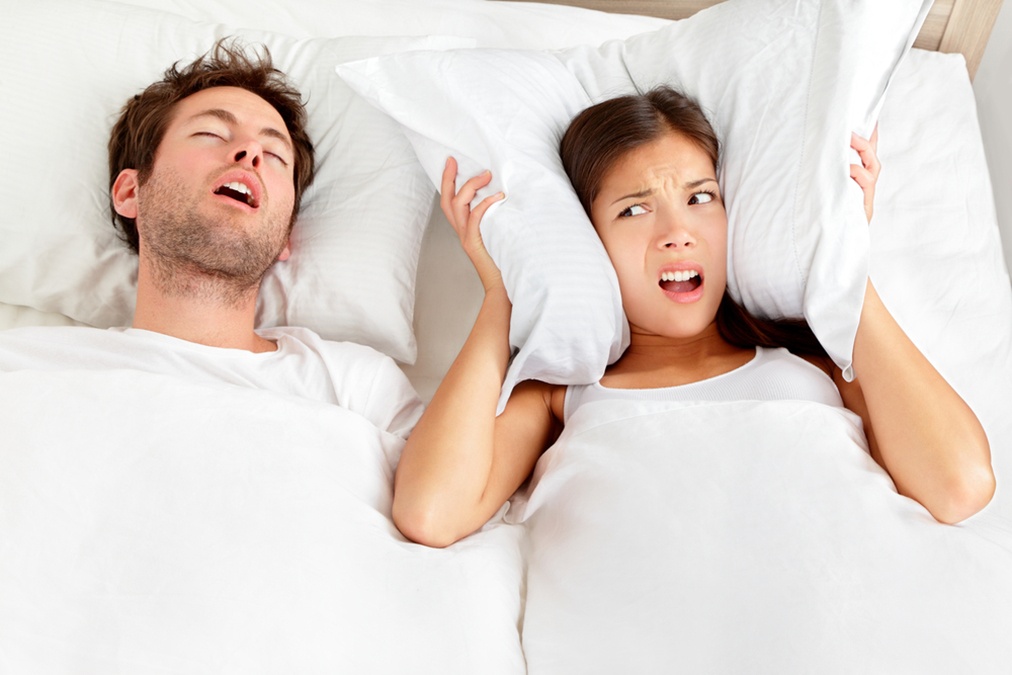 As irritating as snoring is, most of us wouldn’t think it had any serious consequences, and if it did, we would not connect it to the cause behind destroying part of your skin.
As irritating as snoring is, most of us wouldn’t think it had any serious consequences, and if it did, we would not connect it to the cause behind destroying part of your skin.
But a new study from Loyola University and a publication in the Journal The Ocular Surface reveals that connection. Also, if you noticed your skin being damaged in this way, you need to seek medical help, as it can be a sign of a much more serious condition.
There is a condition called lax eyelid syndrome, which means that your eyelids are floppy and rubbery and easily flip over, even during simple movements such as turning over in bed and letting them come into contact with your pillow.
It is not common, unless you have sleep apnea, like many snoring-afflicted people do.
Since most people’s sleep apnea goes undetected, this eyelid condition maybe an indicator that your snoring is actually a sleep apnea in disguise.
Researchers invited 35 people suspected of having sleep apnea into a laboratory to monitor their sleep properly. Through this study, 32 of them were diagnosed with sleep apnea.
When they examined their subject’s eyelids, they found that 53% of those with sleep apnea had lax eyelid syndrome. That is a much higher percentage than the general population.
So how does sleep apnea cause lax eyelid syndrome?
1. Sleep apnea coincides with systemic inflammation throughout your body.
2. Inflammation attacks and destroys a protein called elastin, a protein whose job is to allow skin to stretch and contract.
3. Because your eyelids stretch and contract pretty much every time you blink, a lack of elastin can cause floppy eyelids.

 Multiple Sclerosis
Multiple Sclerosis Banishing Bronchitis
Banishing Bronchitis Gum Disease Gone
Gum Disease Gone Overcoming Onychomycosis
Overcoming Onychomycosis Neuropathy No More
Neuropathy No More The Prostate Protocol
The Prostate Protocol Brain Booster
Brain Booster
 Ironbound
Ironbound
 Solution for Shingles
Solution for Shingles
 The Bone Density Solution
The Bone Density Solution
 The Ultimate Healing Protocol
The Ultimate Healing Protocol
 The Parkinson's Protocol
The Parkinson's Protocol
 The Chronic Kidney Disease Solution
The Chronic Kidney Disease Solution
 Overthrowing Anxiety
Overthrowing Anxiety The Fatty Liver Solution
The Fatty Liver Solution The Hypothyroidism Solution
The Hypothyroidism Solution
 The End of Gout
The End of Gout The Blood Pressure Program
The Blood Pressure Program
 The Oxigized Cholesterol Strategy
The Oxigized Cholesterol Strategy
 Stop Snoring And Sleep Apnea Program
Stop Snoring And Sleep Apnea Program
 The Arthritis Strategy
The Arthritis Strategy The Vertigo & Dizziness Program
The Vertigo & Dizziness Program The 3-Step Diabetes Strategy
The 3-Step Diabetes Strategy Hemorrhoids Healing Protocol
Hemorrhoids Healing Protocol The Erectile Dysfunction Master
The Erectile Dysfunction Master Weight Loss Breeze
Weight Loss Breeze The IBS Program
The IBS Program The Insomnia Program
The Insomnia Program The Migraine and Headache Program
The Migraine and Headache Program The Neck Pain Solution
The Neck Pain Solution The Menopause Solution
The Menopause Solution The Ejaculation Master
The Ejaculation Master The TMJ Solution
The TMJ Solution The Acid Reflux Solution
The Acid Reflux Solution The Fibromyalgia Solution
The Fibromyalgia Solution The Psoriasis Strategy
The Psoriasis Strategy